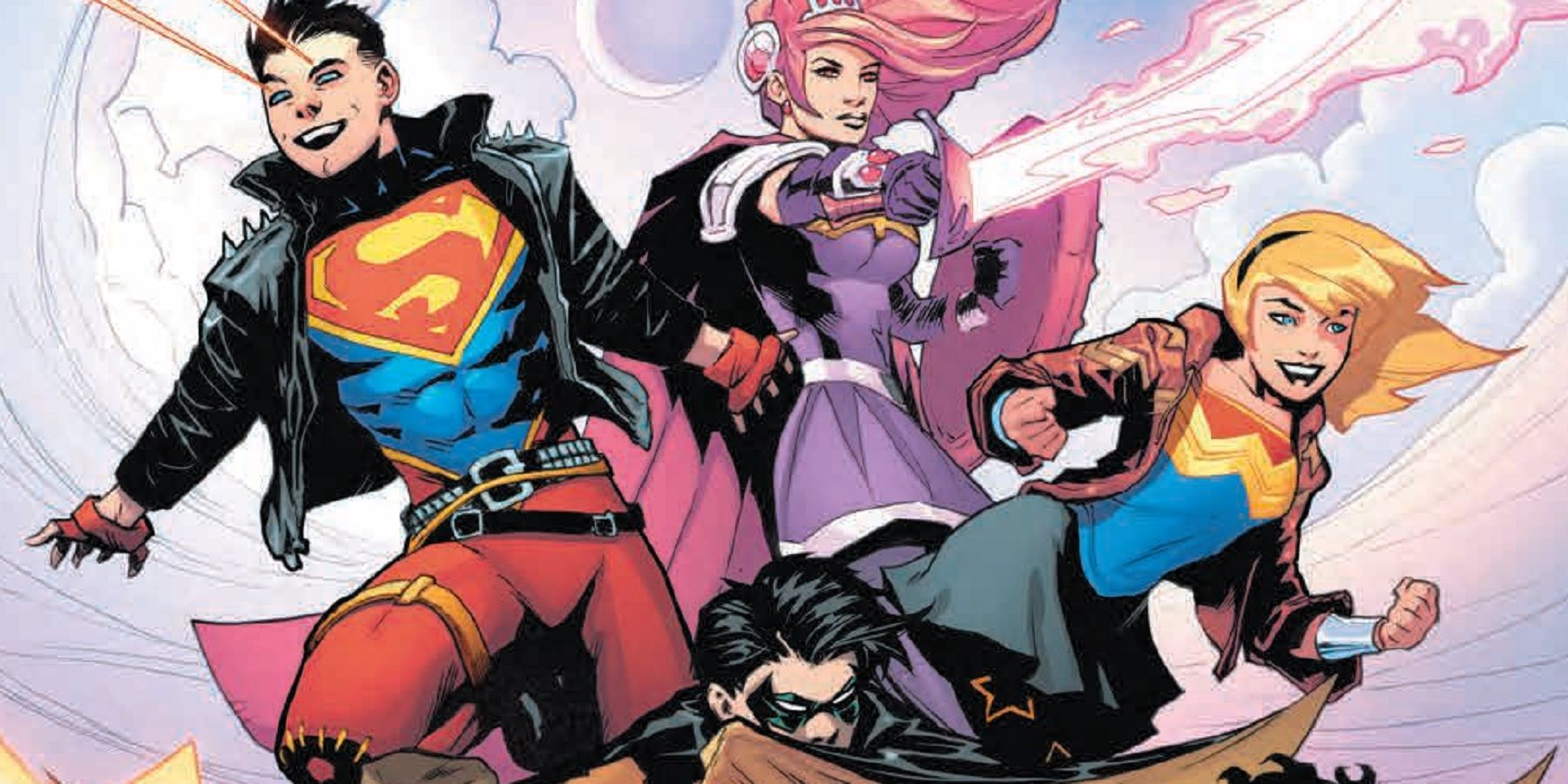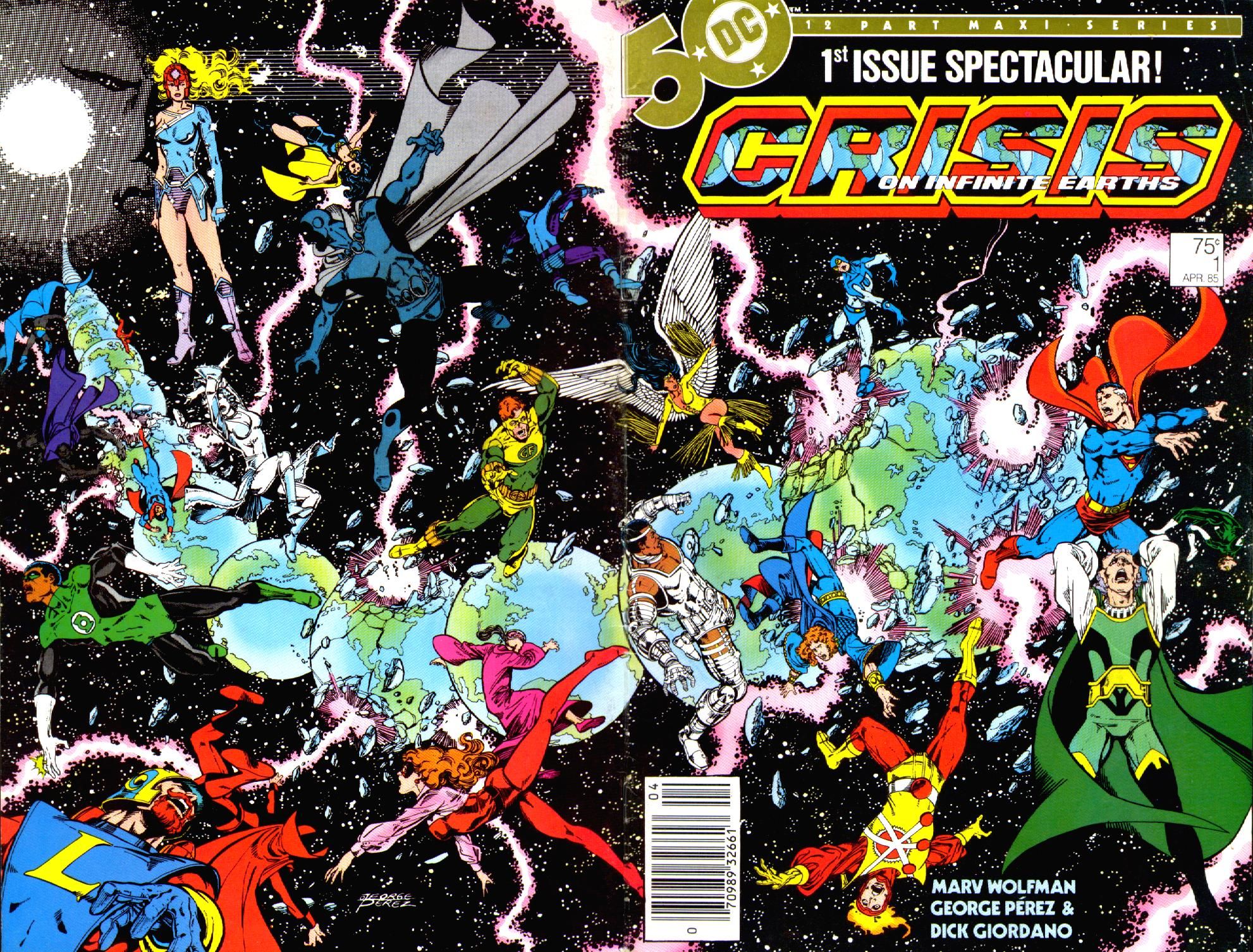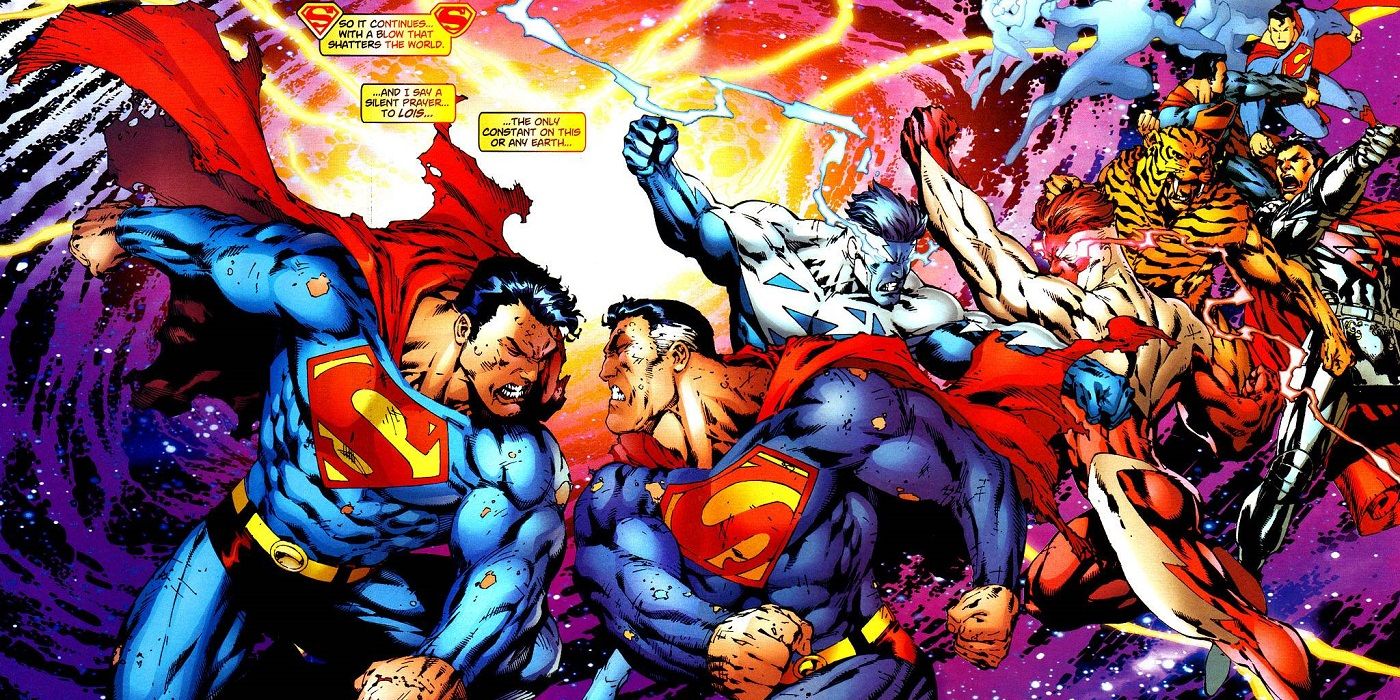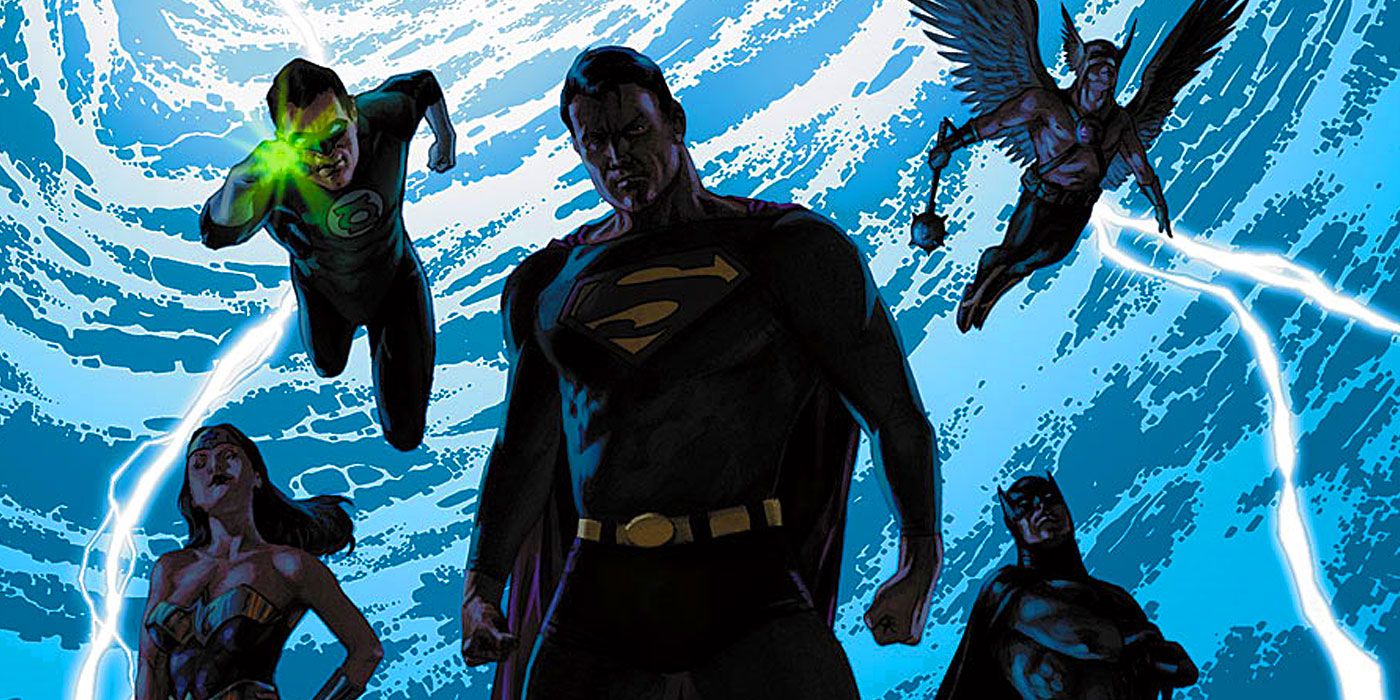WARNING: The following article contains major spoilers for Young Justice #1 by Brian Michael Bendis, Patrick Gleason, Alejandro Sanchez and DC Lettering, on sale now.
Brian Michael Bendis and Patrick Gleason's Young Justice #1 officially introduces a couple of new heroes into DC Comics' current continuity. Moreover, it also brings back an entire roster of off-world characters who have been largely forgotten. But perhaps most importantly, one of those characters makes a startling and continuity-altering revelation that stands to redefine the very context of the publisher's Rebirth initiative.
The character making this revelation is Carnelian, the adopted son of Dark Opal, ruler of Gemworld's House of Opal. That's right, Gemworld is hereby known to exist as part of Rebirth. More relevant, though, is Carnelian's claim to Opal's king that their realm, like Earth, has been impacted in the past by seven different "crises." Yes, Dark Opal's son is referring to those crises – the periodic continuity-altering events that have repeatedly changed characters and histories across the DC Universe.
Seven crises? Have there really been that many history-shaking events at DC over the past few decades? There indeed have – and the following just might be what the son of Opal's ruler is referring to.
RELATED: Bendis Working on Young Justice Spinoff with Major Female Creator
If It Ain't Broke …
The most obvious crisis, of course, was the first such continuity-wiping event that set the standard for all that followed, namely Marv Wolfman and George Pérez's Crisis on Infinite Earths some 34 years ago. The name paraphrased the story titles assigned to the earliest Justice League of America/Justice Society of America crossovers going back to the 1960s, but Crisis was much further reaching. It tried to streamline DC Comics continuity by eliminating the longstanding concept of a multiverse. Instead of multiple incarnations of each character, there was now only one.
And, things were much simpler – for a time. Playing fast and loose with the new continuity in Crisis' aftermath, though, created a new set of problems. Problems that begat the second crisis, Dan Jurgens and Jerry Ordway's Zero Hour: Crisis in Time, about a decade later. This event, though, ultimately convoluted things even more. Intended to fix the continuities of franchises like Hawkman and the Legion of Super-Heroes, among others, Zero Hour instead only made things worse.
Mark Waid's subsequent Kingdom micro-series five years later first introduced the concept of Hypertime, a sweeping, catch-all idea that essentially was the scapegoat blamed for any continuity glitches. The kinds of incongruities Crisis and Zero Hour proved weren't so easy to fix. The Hypertime concept has been used in Rebirth, but it never really effectively addressed the mess that DC continuity had again become more than a decade after Crisis on Infinite Earths thought it had fixed everything.
RELATED: Teen Lantern, Wonder Girl & More Join Young Justice in New Art
… Then Break It.
The next actual crisis, presumably the third Carnelian is referencing, came around the same time as Kingdom in the form of Grant Morrison and Howard Porter's "Crisis Times Five," a four-part storyline in JLA. This arc wasn't a continuity-changing event like previous "Crisis" storylines, but it did reinstate a new incarnation of the JSA into DC's post-Crisis landscape. The team's return was welcomed by fans, and nearly 15 years after the original Crisis, openly acknowledged something felt by many since during that time. Crisis, in the interests of streamlining continuity, threw out the baby with the bath water, jettisoning characters that were liked by many and had been sorely missed. Could the return of the multiverse be far behind?
Its return would have to wait, as the fourth crisis wasn't DC's typical kind of crisis. Brad Meltzer and Rags Morales' Identity Crisis in 2004 didn't alter any existing continuity, but did usher in a series of cascading events that sowed distrust within the superhero community. These events played into the subsequent, darker events of Geoff Johns and Phil Jimenez' Infinite Crisis two years later. This fifth "crisis" was the first true sequel to the original, featuring the return of several notable characters Wolfman and Pérez's epic had written out of continuity. Infinite Crisis was then used as a springboard to make further tweaks to DC history, such as the return of Jason Todd, who had been murdered by the Joker years prior.
The weekly year-long series 52 immediately followed, helmed by Johns, Morrison, Waid, Greg Rucka and Keith Giffen. While not a crisis in the sense that it's come to be known in DC history, the end of that series housed a startling revelation -- a new multiverse, consisting of a not-so-infinite 52 worlds, had already been created at the conclusion of Infinite Crisis. 52 therefore revealed that the first actual sequel to the original Crisis, which had done away with the multiverse, had now reinstated it (or at least a form of it) more than twenty years after it was retconned away.
RELATED: Young Justice Solicit Offers An Intriguing Clue About Superboy's Return
NEXT PAGE: Young Justice Hints That DC's Continuity Was Never Broken In the First Place
The immediate follow-up weekly series Countdown explored the new multiverse, and in turn led directly into what could be considered the sixth crisis: Grant Morrison and J.G. Jones' Final Crisis. 2008's big event series concluded by making full use of the new multiverse, going so far as to feature multiple incarnations of Superman to resolve the far-reaching conflict. The so-called final crisis, ironically, embraced the very notion that the original had set out to eliminate.
If that was the final crisis, then what about the supposed seventh? That leaves the currently ongoing Heroes in Crisis by Tom King and Clay Mann. The current series, though, seems to be a "crisis" in name only, at least relative to the multiversal reach of the previous storylines. While Heroes in Crisis so far has essentially been a superhero murder mystery, five issues still remain, and there's no certainty that the story can't or won't morph into one with a more extensive scope. Also, the timing of Heroes in Crisis relative to that of Young Justice hasn't been established, so Young Justice may take place in the former series' aftermath.
And this is all before we get to the delayed, yet imminent conclusion to Johns and Gary Frank's reality-threatening Doomsday Clock.
RELATED: An Iconic Piece of Superman’s History Is in the Hands of a Secret Enemy
Whatever the seven crises might be, Carnelian's comment reveals a notable and significant change to DC history (Flashpoint, anyone?). After eight decades, and multiple attempts to remove, reinvigorate, and reinstate elements of past continuity, these crises are no longer simply attempts to change history – they're instead part of that one long timeline. In an already dubious attempt to sort out what's "happened" and what hasn't, the revelation is that all of it has happened. All of it is "real." Meaning that for the first time since Crisis on Infinite Earths, the entirety of DC's entire publishing history is now canon.
So while Young Justice #1 serves to bring characters believed to be gone back into continuity, its underlying storyline is even bigger.




